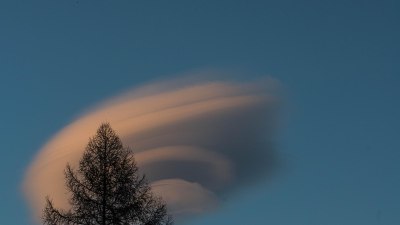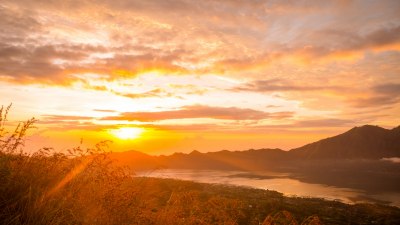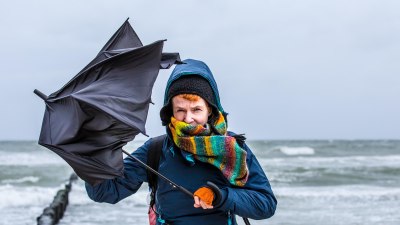How Winds Funnel Through Gaps in Terrain
Explore the dynamics of how winds accelerate and funnel through terrain gaps, influencing weather and local climates.

Winds moving through the atmosphere often encounter various natural obstacles, including mountains, hills, and ridges. One fascinating and important phenomenon occurs when wind flows are forced through narrow openings between these terrain features. Known as wind funneling, this process significantly impacts wind speed, direction, and local weather patterns. Understanding how winds funnel through gaps in the terrain is crucial for meteorologists, engineers, urban planners, and environmental scientists.
At its core, wind funneling involves the acceleration and channeling of air as it passes through constrictions created by terrain. When large air masses collide with mountain ranges, they are compelled to redirect their flow. If there is a natural gap—such as a mountain pass, canyon, or valley opening—the wind tends to move through this narrow corridor rather than going over or around the barrier. Because the same volume of air must pass through a reduced cross-sectional area, the wind velocity increases—a concept rooted in fluid dynamics principles.
Topographic Influences on Wind Flow
Terrain plays an essential role in shaping the pattern and strength of winds. Mountains and hills act as physical barriers that disrupt and redirect airflow. In the absence of gaps, winds might slow down as they are forced to go uphill or around massive elevations. However, when a gap exists, the air experiences less resistance compared to scaling the entire mountain, making it an efficient route for the airflow.
These openings in terrain, whether natural or man-made, act like nozzles for the wind. For example, a narrow mountain pass behaves similarly to a funnel, concentrating and accelerating the wind through a small area. This acceleration results from the principle of conservation of mass, which states that the flow rate must remain constant. Therefore, as the available space tightens, the velocity of the wind must increase to maintain the overall flow.
Besides speed, the direction of the wind is also affected. As the wind is forced to turn and navigate through the terrain's contours, it adopts a pathway aligned with the gap's orientation. This directional shift can have lasting effects on weather and climate in the immediate downstream regions.
Fluid Dynamics and Conservation Principles
The physical basis for wind funneling lies in fluid dynamics—the branch of physics concerned with the behavior of fluids (liquids and gases) in motion. Air, though invisible, behaves like a fluid, and its movement can be analyzed with the same principles applied to water or oil flow.
One fundamental law influencing wind funneling is the conservation of mass or continuity equation. This law says that in a steady flow, the mass of fluid entering a section equals the mass leaving it. When applied to wind in a terrain gap, it means the volume of air entering the opening must equal the volume exiting. Since the gap's cross-sectional area is smaller than the surrounding open plains, the air's speed has to increase within the gap.
Additionally, Bernoulli's principle can be invoked to explain changes in pressure associated with accelerating wind flows. As wind speeds increase through the gap, pressure decreases in that localized area, potentially influencing weather phenomena such as cloud formation and precipitation in the vicinity.
Common Examples of Wind Funneling
Wind funneling is observed in various geographic locations worldwide. Mountain passes like the Khyber Pass between Afghanistan and Pakistan serve as classic examples, where local winds can reach significant speeds due to channeling effects. In the United States, the Columbia River Gorge, a canyon straddling the Washington and Oregon border, is renowned for its fierce winds, making it a hotspot for windsurfing and kiteboarding.
Coastal regions with rugged cliffs and inland valleys also experience wind funneling. When onshore sea breezes approach the coastline, gaps in coastal ranges can focus these winds, dramatically increasing their strength as they rush inland through these corridors. Similarly, urban environments bordered by hills or low mountain ridges can experience concentrated wind flows where streets and avenues align with natural terrain openings.
Impact on Local Weather and Climate
The funneling of wind influences local weather patterns in multiple ways. Increased wind speeds can enhance the mixing of the atmospheric boundary layer, affecting temperature and humidity distribution near the surface. In cold climates, strong funnel winds can lead to increased wind chill effects, making temperatures feel significantly colder than actual measurements.
Conversely, in arid or semi-arid regions, these accelerated winds can increase evaporation and desiccation, impacting vegetation survival and soil moisture retention. Additionally, the pressure differences created by wind acceleration may induce localized convection, influencing the formation of clouds and precipitation patterns in the downwind regions.
Wind funneling also affects the dispersion of airborne pollutants and aerosols. Higher wind speeds in gaps enhance the transport of particulates, which can either help clear pollution or spread contaminants over larger distances, depending on the wind direction and source.
Engineering and Safety Considerations
From an engineering perspective, understanding wind funneling is critical for the design of infrastructure such as bridges, roads, and buildings situated near terrain gaps. Elevated wind speeds can pose safety risks, affecting vehicle stability on mountain passes and bridges. Moreover, structures exposed to intensified winds require reinforcement to withstand increased aerodynamic forces.
Wind turbine placements also benefit from knowledge about funneling phenomena. Narrow terrain openings with strong, accelerated winds are ideal locations for wind energy generation. Many wind farms take advantage of natural gaps to maximize the output of turbines due to the higher wind speeds and steadier flow observed in these zones.
In urban planning, accounting for wind funneling helps mitigate wind hazards such as snow drifting in cold climates and excessive wind loads on buildings. Careful orientation of streets and building layouts can minimize or channel strong winds safely, improving comfort and reducing energy costs related to heating and cooling.
Predicting Wind Funneling Effects
Forecasting wind funneling requires sophisticated atmospheric and geographic modeling. Meteorological models incorporate terrain data using digital elevation maps to simulate how winds interact with the landscape. High-resolution models enable prediction of where the wind will accelerate and where turbulence or eddies may form downstream of gaps.
Additionally, in-situ measurements taken at strategic locations help validate these models. Anemometers installed in mountain passes or valleys provide real-time wind speed and direction data, offering insight into the behavior of funnel winds. Together with satellite and radar observations, these data aid in refining predictions for public safety and operational planning.
Weather services often issue special advisories for regions known for wind funneling, especially when high wind events threaten transportation and infrastructure. Understanding microclimate effects connected to terrain gaps enhances preparedness for weather extremes, such as dust storms, channeled storm winds, and rapid temperature fluctuations caused by wind advection.
Ecological and Environmental Impact
Wind funneling also influences ecosystems. The increased wind velocity in gaps can affect seed dispersal and pollination by air-borne agents, impacting plant distribution and biodiversity. Animal behavior adapts to these dynamic wind conditions, with certain bird species utilizing channelized wind currents to simplify their migration routes or hunting strategies.
Furthermore, sustained funneling winds can lead to soil erosion on exposed slopes adjacent to the gaps. This erosion can degrade habitats and lead to sedimentation in downstream water bodies, affecting water quality and aquatic ecosystems. Managing vegetation and land use along these terrain openings is often essential to prevent negative environmental outcomes.
Human Cultural and Historical Aspects
Historically, terrain gaps that funnel winds have influenced human settlement and movement patterns. Mountain passes with reliable wind directions have been used for navigation and as trade routes. Wind funneling sometimes posed challenges, with sudden gusts making travel hazardous but also serving as natural barriers or defenses.
In some cultures, high winds passing through specific gaps have been incorporated into folklore and spiritual beliefs. The sounds of rushing wind in narrow canyons can evoke mysticism or be interpreted as omens. Understanding the science behind these winds contextualizes such cultural narratives.
The direction and strength of prevailing winds through terrain openings have also guided architectural styles. In regions where harsh funnel winds are common, traditional building techniques include wind breaks, reinforced walls, and low-profile roof designs to withstand gusts channeled through gaps.
Technology and Research Developments
Modern research continuously enhances the understanding of wind funneling through improved observational technologies and computational tools. Remote sensing instruments such as LIDAR and Doppler radar provide detailed wind field measurements in complex terrain. Unmanned aerial vehicles (UAVs) are employed for rapid deployment of sensors within difficult-to-access gaps.
Advanced computational fluid dynamics (CFD) simulations enable scientists to model wind behavior with great accuracy, helping to predict not only velocities but also turbulence and pressure variations within terrain gaps. These simulations assist in designing infrastructure, optimizing renewable energy extraction, and preparing for extreme weather events caused by channeled winds.
Interdisciplinary collaborations involving meteorologists, geologists, engineers, ecologists, and urban planners ensure comprehensive approaches to managing wind funneling impacts. Integrating climatology and terrain science allows for adaptive strategies in response to climate change, which may alter prevailing wind patterns and increase the significance of funnel effects in vulnerable areas.
In conclusion, winds funnel through gaps in terrain due to fundamental principles of fluid flow and topographic constraints. This natural channeling results in increased wind speed, altered directions, and diverse effects on weather, ecosystems, human activities, and infrastructure. Continued study and careful application of this knowledge are vital to harnessing benefits and mitigating risks associated with wind funneling phenomena.











